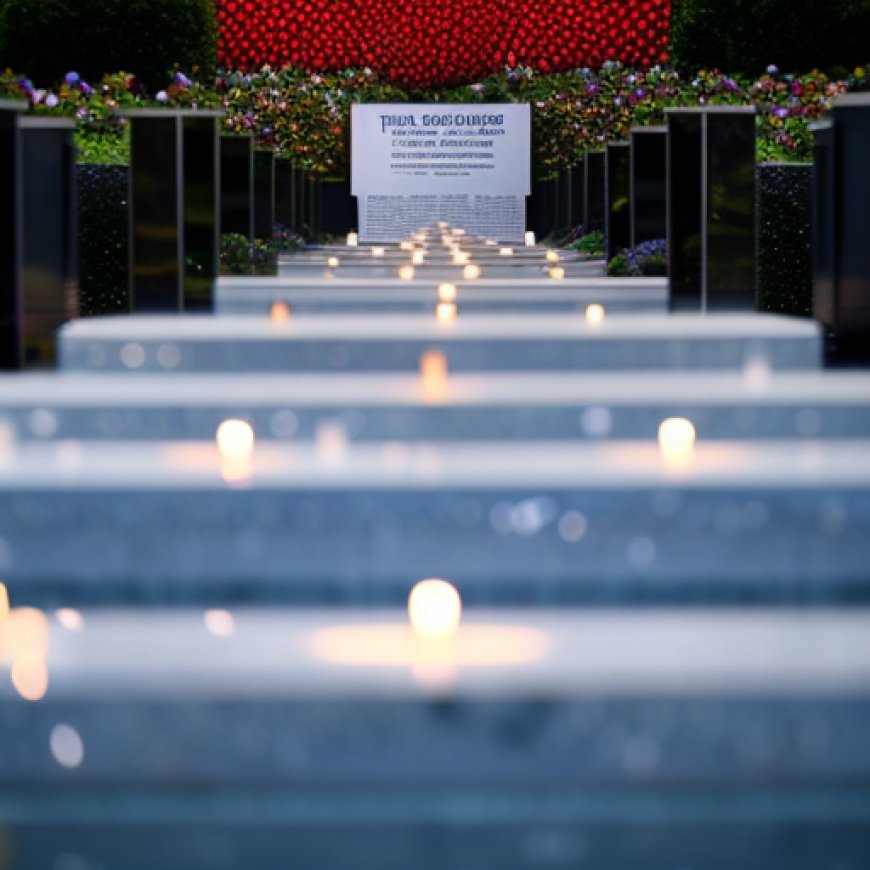The First Permanent HIV/AIDS Memorial in London Names Shortlisted Artists | Artnet News
The First Permanent HIV/AIDS Memorial in London Names Shortlisted Artists artnet News


London to Have First Permanent HIV/AIDS Memorial
Ryan Gander, Anya Gallaccio, Harold Offeh, Shahpour Pouyan, and Diana Puntar have been named as the five shortlisted artists to design London’s very first permanent HIV/AIDS memorial. The public monument will be located near Middlesex Hospital, where Princess Diana opened the U.K.’s first AIDS unit in 1987. It will be unveiled in 2026.
Support from the Sustainable Development Goals (SDGs)
- SDG 3: Good Health and Well-being – The memorial aims to raise awareness about HIV/AIDS and honor those who have lost their lives to the epidemic. It also supports efforts to end HIV transmission and AIDS deaths worldwide.
- SDG 10: Reduced Inequalities – By recognizing the activism of people living with HIV from all walks of life, the memorial celebrates resilience and fights against stigma and discrimination.
Project Details
The project, backed by the charity AIDS Memory UK (AMUK), has been allocated £130,000 ($165,000) by the city’s mayor Sadiq Khan from the Commission for Diversity in the Public Realm. The winning proposal will be selected by a panel of 11 judges that includes physician Jane Anderson, currently chair of The National AIDS Trust; AMUK founder Ash Kotak, art historian Satish Padiyar, artist Rana Begum, theater director Neil Bartlett, and writers Jack Guinness and Olivia Laing.
Significance of the Location
The chosen location near Middlesex Hospital holds special significance because Princess Diana played a crucial role in fighting stigma around HIV when the disease was still poorly understood. She regularly visited the AIDS unit and advocated for compassion and understanding towards people living with HIV.

Diana, Princess of Wales visiting patients suffering from AIDS at the Hospital Universidade in Rio de Janeiro, Brazil, 25th April 1991. Photo by Tim Graham Photo Library via Getty Images.
Shortlisted Artists
- Anya Gallaccio – Installation artist known for working on a large scale with organic materials that highlight natural processes of decay.
- Ryan Gander – Conceptual artist awarded an OBE in 2017, recognized for his wry works in film, installation, performance, and sculpture.
- Diana Puntar – London-based artist using sculpture and immersive installation to explore and disrupt societal systems.
- Harold Offeh – Performance artist, photographer, and video artist whose works invite reflection and aim to educate audiences.
- Shahpour Pouyan – Conceptual ceramicist whose contemplative pieces incorporate cross-cultural references and have been exhibited at prestigious institutions like the V&A and the British Museum.
Importance of the Memorial
“A memorial in the U.K. would go some way to recognize the enormity of the HIV/AIDS pandemic,” said activist Winnie Ssanyu Sseruma, who is on AMUK’s advisory board. “And the activism of people living with HIV from all walks of life, whose resilience needs to be celebrated.” The memorial not only serves as a tribute to those affected by HIV/AIDS but also raises awareness about the ongoing fight against the disease.
About AIDS Memory UK (AMUK)
AMUK is a charity dedicated to commemorating those who lost their lives to the HIV/AIDS epidemic. It also works towards ending HIV transmission and AIDS deaths worldwide.
SDGs, Targets, and Indicators
| SDGs | Targets | Indicators |
|---|---|---|
| SDG 3: Good Health and Well-being | Target 3.3: By 2030, end the epidemics of AIDS, tuberculosis, malaria, and neglected tropical diseases and combat hepatitis, water-borne diseases, and other communicable diseases | Indicator not mentioned in the article |
| SDG 10: Reduced Inequalities | Target 10.3: Ensure equal opportunity and reduce inequalities of outcome, including by eliminating discriminatory laws, policies, and practices and promoting appropriate legislation, policies, and action in this regard | Indicator not mentioned in the article |
| SDG 16: Peace, Justice, and Strong Institutions | Target 16.7: Ensure responsive, inclusive, participatory, and representative decision-making at all levels | Indicator not mentioned in the article |
1. Which SDGs are addressed or connected to the issues highlighted in the article?
The issues highlighted in the article are connected to SDG 3: Good Health and Well-being, SDG 10: Reduced Inequalities, and SDG 16: Peace, Justice, and Strong Institutions.
2. What specific targets under those SDGs can be identified based on the article’s content?
Based on the article’s content, the specific targets that can be identified are:
- Target 3.3: By 2030, end the epidemics of AIDS, tuberculosis, malaria, and neglected tropical diseases and combat hepatitis, water-borne diseases, and other communicable diseases
- Target 10.3: Ensure equal opportunity and reduce inequalities of outcome, including by eliminating discriminatory laws, policies, and practices and promoting appropriate legislation, policies, and action in this regard
- Target 16.7: Ensure responsive, inclusive, participatory, and representative decision-making at all levels
3. Are there any indicators mentioned or implied in the article that can be used to measure progress towards the identified targets?
No indicators are mentioned or implied in the article that can be used to measure progress towards the identified targets.
4. SDGs, Targets, and Indicators
| SDGs | Targets | Indicators |
|---|---|---|
| SDG 3: Good Health and Well-being | Target 3.3: By 2030, end the epidemics of AIDS, tuberculosis, malaria, and neglected tropical diseases and combat hepatitis, water-borne diseases, and other communicable diseases | Indicator not mentioned in the article |
| SDG 10: Reduced Inequalities | Target 10.3: Ensure equal opportunity and reduce inequalities of outcome, including by eliminating discriminatory laws, policies, and practices and promoting appropriate legislation, policies, and action in this regard | Indicator not mentioned in the article |
| SDG 16: Peace, Justice, and Strong Institutions | Target 16.7: Ensure responsive, inclusive, participatory, and representative decision-making at all levels | Indicator not mentioned in the article |
Behold! This splendid article springs forth from the wellspring of knowledge, shaped by a wondrous proprietary AI technology that delved into a vast ocean of data, illuminating the path towards the Sustainable Development Goals. Remember that all rights are reserved by SDG Investors LLC, empowering us to champion progress together.
Source: news.artnet.com

Join us, as fellow seekers of change, on a transformative journey at https://sdgtalks.ai/welcome, where you can become a member and actively contribute to shaping a brighter future.







